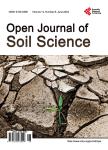Review and Analysis: Did the United States Transport, Off-Load and Use Commercial 2,4,5-T Herbicides with Unknown Amounts of Dioxin TCDD on Military Base Grounds in Panama Canal Zone between 1948 and 1999?
Review and Analysis: Did the United States Transport, Off-Load and Use Commercial 2,4,5-T Herbicides with Unknown Amounts of Dioxin TCDD on Military Base Grounds in Panama Canal Zone between 1948 and 1999?作者机构:College of Agricultural Consumer and Environmental Sciences University of Illinois Urbana USA
出 版 物:《Open Journal of Soil Science》 (土壤科学期刊(英文))
年 卷 期:2023年第13卷第11期
页 面:490-515页
学科分类:12[管理学] 1204[管理学-公共管理] 120402[管理学-社会医学与卫生事业管理(可授管理学、医学学位)] 1004[医学-公共卫生与预防医学(可授医学、理学学位)] 10[医学]
主 题:Dioxin TCDD Agent Orange 2 4 5-T Panama Canal Zone Commercial Herbicides US Department of Defense Fort Sherman Monsanto Ezra Kraus
摘 要:The 84 km Panama Canal connecting the Atlantic and Pacific oceans has historically been a strategic waterway for shipping and the location of United States (US) military bases. Since the construction of Lake Gatun reservoir, canal locks and navigation channel through the Isthmus of Panama tropical forests in the 1910s, chemicals, pesticides, and herbicides have been essential for controlling upland and wetland vegetation as well as managing mosquito-borne diseases. Chemicals and pesticides flowed into Lake Gatun via land surface runoff and subsurface drainage either attached to the sediment or in solution during the rainy season. Lake Gatun and the Panama Canal was the drinking water source for most of the civilian and military population living in the Panama Canal Zone. Between 1948 and 1999, US military base commanders had the ability to order, from the Federal Supply Catalog, commercially available herbicide 2,4,5-T with unknown amounts of dioxin TCDD for use on the military base grounds in the Panama Canal Zone. The herbicide 2,4,5-T was transported to Panama Canal Zone ports, including the ports Cristobal on the Caribbean and Balboa on the Pacific, and distributed to the US military bases in Panama by rail or truck. The US National Toxicology Program and the International Agency for the Research on Cancer listed dioxin and TCDD as known human carcinogens. Dioxins are endocrine disrupters and can cause certain chloracne, cancers, developmental and reproductive effects. In 1985, the United States government banned the manufacture of the herbicide 2,4,5-T, with unknown amounts of dioxin TCDD, after it was shown to cause cancer in animals. The objectives of this study are to determine: 1) the fate of dioxin TCDD, a contaminant in the herbicide 2,4,5-T, sprayed on the US military base vegetation in the Panama Canal Zone from 1948 to 1999, 2) the transport of dioxin TCDD rich sediment via soil erosion and overland flow into Lake Gatun and Panama Canal waterways and 3



